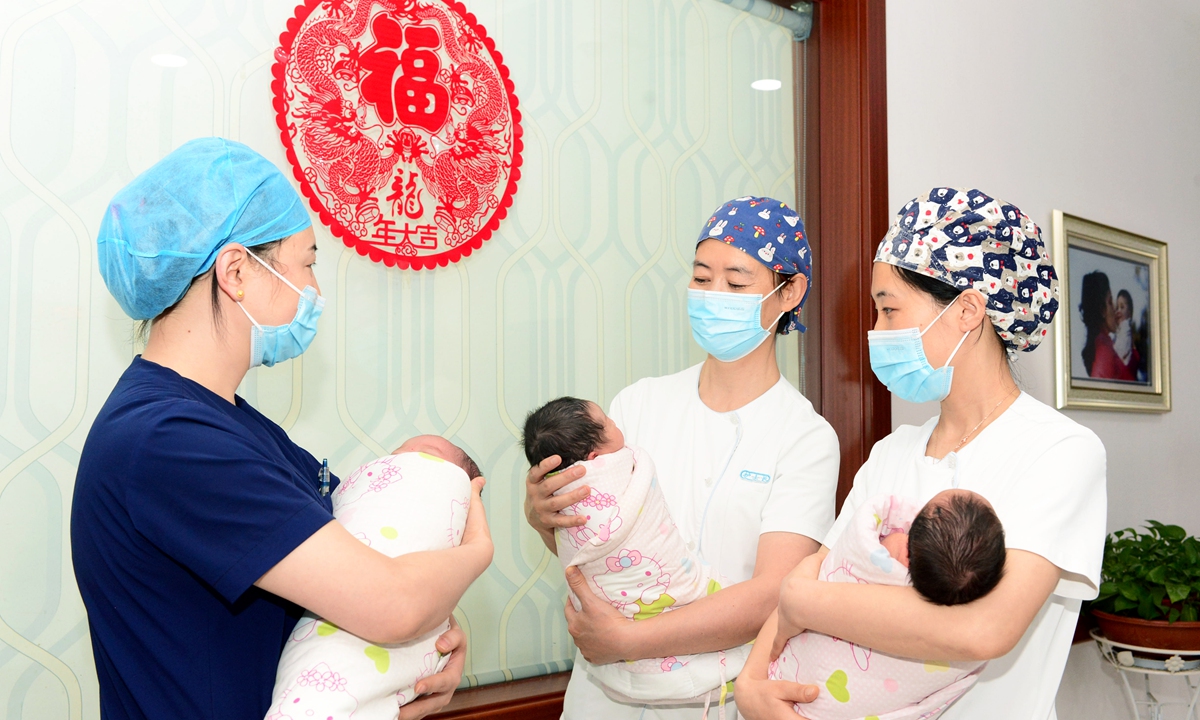
Medical staff at a hospital in Lanzhou, Northwest China’s Gansu Province, take care of newborn babies on February 28, 2024. The hospital delivered 1,035 babies in the first 15 days of the Year of the Dragon. Hospitals in various parts of Gansu have seen a significant increase in newborns during the period. Photo: VCG
East China's Fujian Province has recently included assisted reproductive technology (ART) services in its health insurance coverage. This move follows the lead of approximately 14 other provincial-level regions in China that have already incorporated ART services into their health insurance plans.
The development is expected to provide much-needed financial support to individuals and couples seeking fertility treatment.
According to an official from Fujian's medical insurance bureau, the current price of ART services treatment in Fujian Province will be adjusted and standardized. This include integrating the original 20 items into 12 ART service price items such as "ovum retrieval," and setting prices based on the projects in public hospitals in Fujian. Local medical insurance bureaus in each city are required to formulate project prices based on local conditions.
The bureau said that eight ART services, such as "ovum retrieval," and included two types of consumables can be charged separately as part of the scope of medical insurance payment.
Fujian's new policy will start from September 1 this year.
Earlier this month, East China's Anhui Province and North China's Hebei Province said they would reimburse medical bills for ART services starting August 1, meaning that a total of 14 provincial-level regions across the country now include ART procedures in their medical insurance reimbursement systems as of next month.
Since March, China has accelerated its efforts in including ART services into medical insurance schemes after the National Healthcare Security Administration proposed that eligible regions gradually include therapeutic assisted reproductive services in their medical insurance reimbursement.
So far, a dozen of provincial-level regions including municipalities of Beijing and Shanghai, provinces of Gansu, Zhejiang, Jiangxi, Jiangsu, Shandong, Jilin and Qinghai, as well as Inner Mongolia Autonomous Region, Xinjiang Uygur Autonomous Region and Guangxi Zhuang Autonomous Region have already included ART services into their medical insurance system.
The infertility rate among the Chinese population of childbearing age is currently estimated to be between 12 percent to 15 percent. Including assisted reproductive medical services into medical insurance reimbursement systems is a demonstration of the mutual aid support from the system to these people who desire children but have to rely human assisted techniques.
According to Jin Niu, a lecturer from the School of Public Finance and Administration, Tianjin University of Finance and Economics, including ART services into medical insurance can help reduce the cost of childbirth to some extent, allowing individuals planning to have children to have a better childbirth experience. It is one of the important factors for building a fertility-friendly society, yicai.com reported.
Statistics from the Guangxi Zhuang Autonomous Region Human Assisted Reproductive Technology Management Center show that outpatient visits at assisted reproductive institutions across the autonomous region reached 993,700 over the past six months since the ART services were included in the region's medical insurance reimbursement system over half a year ago, an increase of 14.74 percent year-on-year.
Global Times




